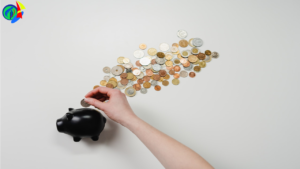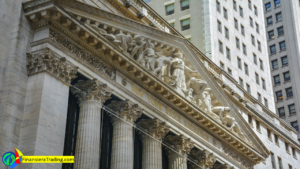Welcome to the world of Forex trading, where the global currency market offers endless opportunities for financial growth. In this comprehensive guide, we’ll embark on a journey through the intricate world of Forex trading, focusing on key aspects that every aspiring trader should master. From understanding currency pairs and leveraging the power of risk management to delving into various trading strategies, we’ll equip you with the knowledge and tools needed to navigate this exciting landscape. Whether you’re a novice seeking to grasp the fundamentals or an experienced trader looking to refine your skills, this guide is designed to be your compass in the Forex market. So, let’s dive into the art and science of Forex trading, where precision, discipline, and strategy converge to unlock the potential for financial independence.
Table of Contents
What is Forex Trading?
Forex, short for foreign exchange, refers to the decentralized global marketplace where currencies are bought and sold. The Forex market is considered one of the largest and most liquid financial markets globally, with a daily trading volume exceeding $6 trillion.

How Does Forex Trading Work?
At its core, Forex trading involves the simultaneous buying of one currency and selling another. Currencies are traded in pairs, such as EUR/USD (Euro/US Dollar) or GBP/JPY (British Pound/Japanese Yen). When you trade Forex, you speculate on the price movement of one currency relative to another.
The exchange rate of a currency pair represents how much of the second currency (the quote currency) you need to buy one unit of the first currency (the base currency). For example, if the EUR/USD exchange rate is 1.20, it means one Euro can be exchanged for 1.20 US Dollars.
Key Participants in the Forex Market
The Forex market operates 24 hours a day, five days a week, thanks to its global nature. Its participants include:
Retail Traders: Individuals like you and me who trade Forex through online brokers.
Banks: Major banks facilitate Forex transactions for clients and manage their own speculative trading.
Central Banks: These institutions influence exchange rates through monetary policies.
Corporations: Companies engaged in international trade use Forex to manage currency exposure.
Hedge Funds and Investment Firms: They engage in speculative trading for profit.
Forex Trading Strategies
Successful Forex trading requires a well-thought-out strategy. Traders use various approaches, including:
Day Trading: Opening and closing positions within the same trading day.
Swing Trading: Holding positions for several days or weeks to capture price swings.
Scalping: Quick, small trades aiming for minor price movements.
Long-Term Investing: Holding positions for months or years based on fundamental analysis.
Risk Management
Trading Forex offers significant profit potential, but it’s essential to manage risks. Some key risk management practices include:
Setting Stop-Loss Orders: These automatically close a position if losses reach a predefined level.
Using Leverage Wisely: Leverage amplifies both gains and losses, so it should be used cautiously.
Diversification: Avoid putting all your capital into a single trade or currency pair.
Risk-Reward Ratio: Assess potential risks and rewards before entering a trade.
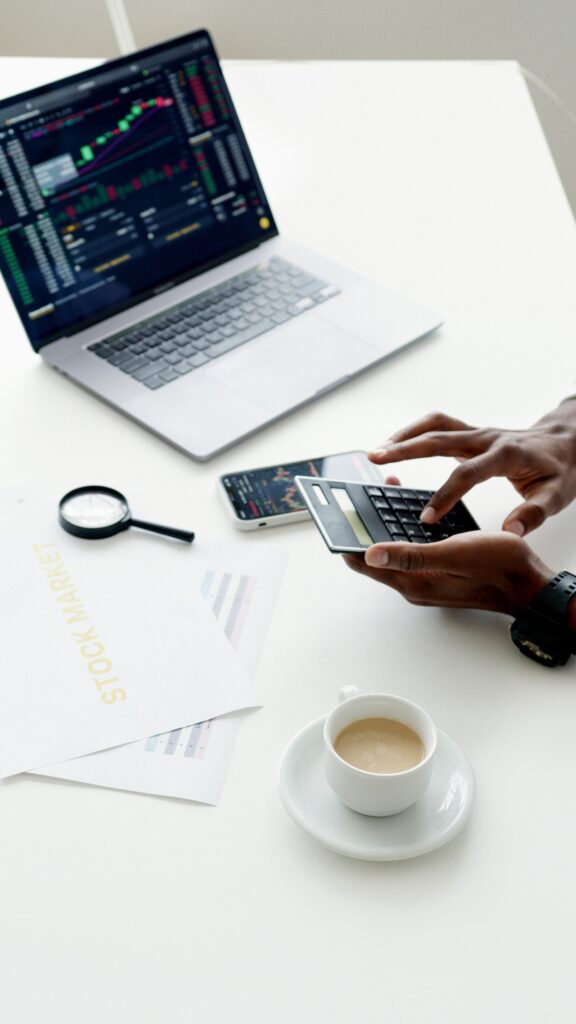
Choosing a Forex Broker
To begin trading Forex, you’ll need a reliable Forex broker. Consider factors like regulation, trading platform features, spreads, and customer support when choosing a broker. Ensure the broker aligns with your trading goals and risk tolerance.
Trading Forex offers exciting opportunities for profit, but it’s important to remember that it also carries inherent risks. As you embark on your Forex trading journey, continue to educate yourself, practice with a demo account, and develop a trading strategy that suits your objectives and risk tolerance.
Now that you have a basic understanding of Forex trading, you can explore specific trading strategies, technical analysis, and fundamental analysis to refine your skills and make informed trading decisions. Remember, successful trading takes time, patience, and continuous learning.
Trading Platform Features
1. User-Friendly Interface
When it comes to trading Forex, having a user-friendly interface is paramount. A platform’s interface is your gateway to the exciting world of currency trading. In this section, we’ll explore what makes a Forex trading platform’s interface user-friendly and why it matters.
What is a User-Friendly Interface?
A user-friendly interface, often referred to as UI, is an interface design that prioritizes ease of use and accessibility for its users. In the context of Forex trading, it means that the platform is designed to make trading straightforward and efficient, even for those who are new to the world of finance.
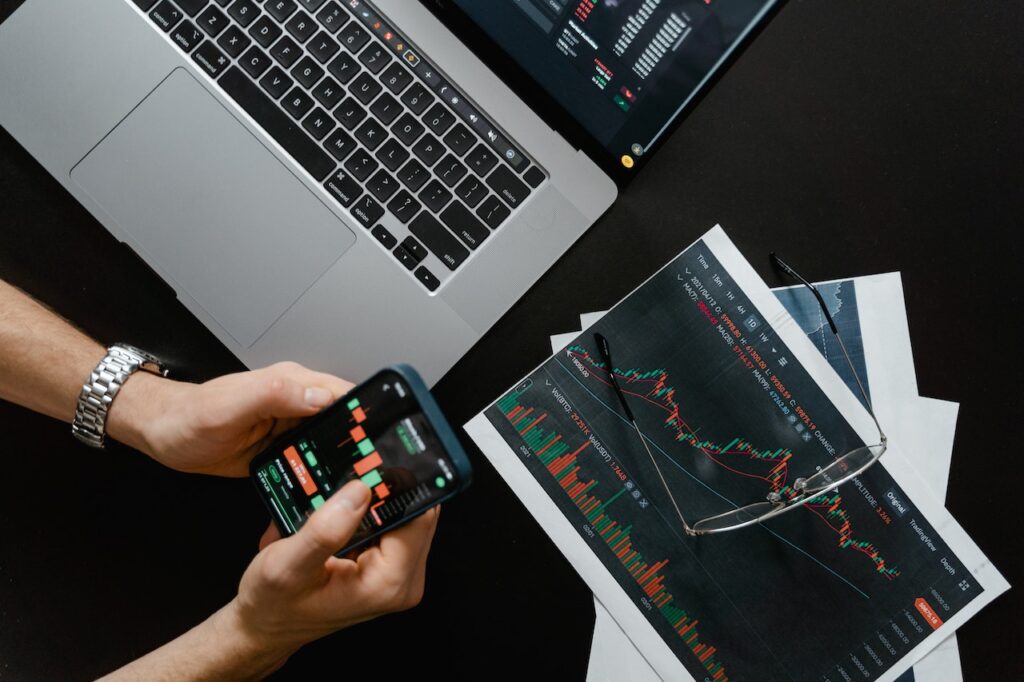
Why Does a User-Friendly Interface Matter?
Ease of Navigation: A user-friendly interface ensures that traders can easily find essential features and tools. This includes locating currency pairs, placing orders, and accessing technical analysis tools.
Efficiency: Time is of the essence in Forex trading. Traders need to execute trades swiftly. A well-designed interface streamlines the trading process, reducing the time it takes to make important decisions.
Reduced Learning Curve: For beginners, a user-friendly interface simplifies the learning process. It minimizes the need for extensive training and allows traders to start trading more quickly.
Key Elements of a User-Friendly Interface
A Forex trading platform with a user-friendly interface typically includes the following elements:
Intuitive Layout: The layout should be logical, with essential features easily accessible. Commonly used functions like placing orders and setting stop-loss orders should be readily available.
Clear Charts: Forex trading involves analyzing price charts. The interface should offer clear, customizable charts with various timeframes and technical analysis tools.
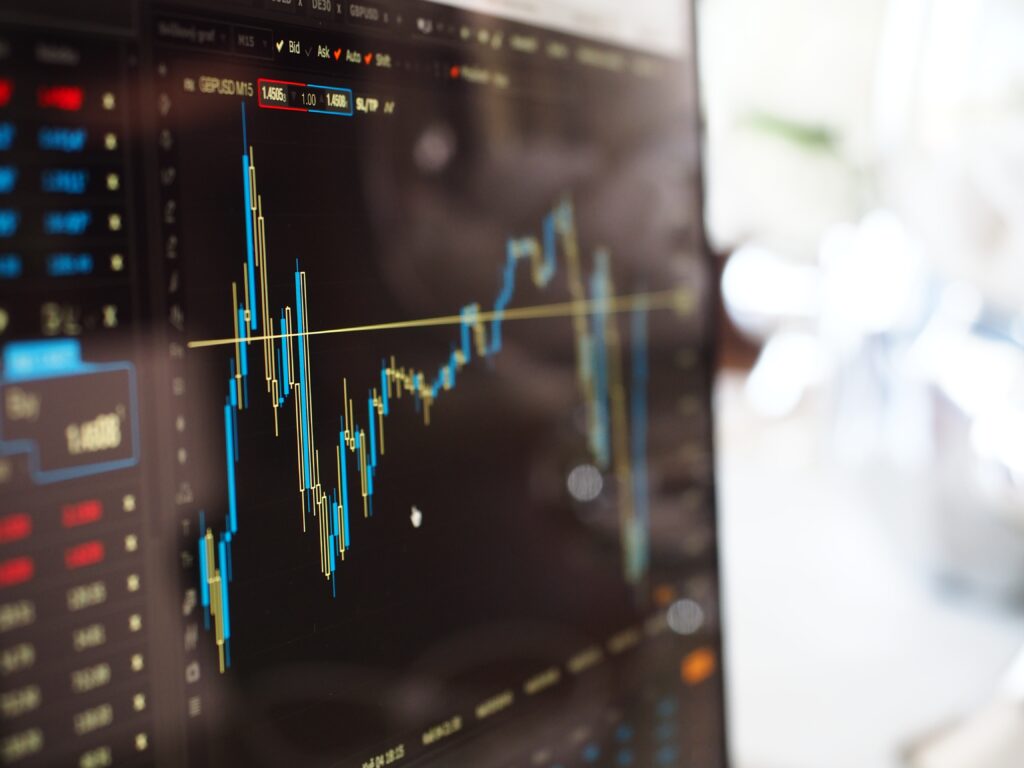
Order Placement: Placing orders should be straightforward. Traders should be able to choose order types (e.g., market orders or limit orders) with ease.
Technical Analysis Tools: Technical analysis is a vital part of Forex trading. Ensure that the platform offers a range of technical indicators and drawing tools.
Mobile-Friendly: In today’s fast-paced world, traders often use mobile devices. A user-friendly Forex platform should have a mobile app with a responsive design.
2. Charting and Analysis Tools
In the world of Forex trading, having access to powerful charting and analysis tools is essential for making informed decisions. In this section, we’ll explore the significance of charting and analysis tools, their role in Forex trading, and what you should look for in a trading platform.
The Importance of Charting and Analysis
Understanding Price Movements
Forex trading revolves around analyzing price movements in currency pairs. This analysis is crucial for making predictions and executing profitable trades. Charting and analysis tools provide traders with the visual representation and data necessary to understand these price movements.
Technical vs. Fundamental Analysis
Two primary methods for analyzing the Forex market are technical analysis and fundamental analysis.
- Technical Analysis: This approach involves studying historical price data and using various charting tools to identify patterns and trends. Traders rely on indicators, such as moving averages and RSI, to make decisions.
- Fundamental Analysis: Fundamental analysis, on the other hand, focuses on economic and political factors that influence currency values. Traders examine news releases, economic indicators, and geopolitical events.
Key Charting and Analysis Tools
Candlestick Charts
Candlestick charts are a popular choice among Forex traders. Each candlestick represents a specific time period and displays the opening, closing, high, and low prices during that period. Candlestick patterns are used to predict future price movements.
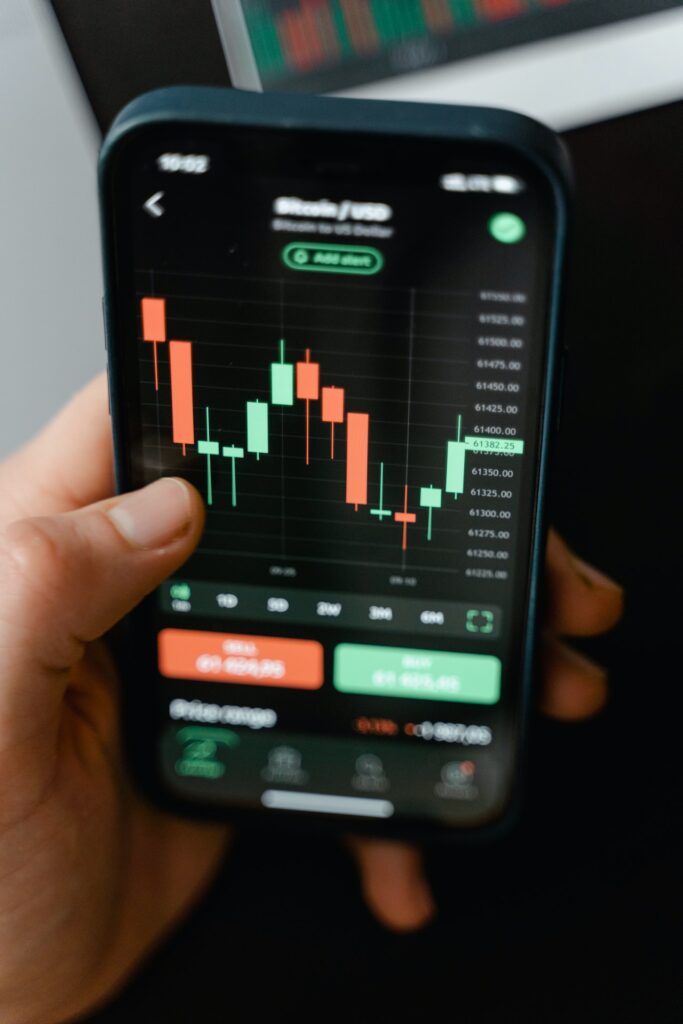
Technical Indicators
Technical indicators, such as Moving Averages, Relative Strength Index (RSI), and MACD, help traders identify trends and potential reversals. These tools provide valuable insights into market conditions.
Drawing Tools
Drawing tools allow traders to mark important levels of support and resistance, trendlines, and chart patterns directly on the charts. These tools aid in visualizing potential trade setups.
Economic Calendars
Economic calendars provide a schedule of upcoming economic events and data releases that can impact currency prices. Staying informed about these events is crucial for fundamental analysis. example: Forex Factory , FXStreet.
What to Look for in a Trading Platform
When choosing a Forex trading platform, consider the availability and functionality of these charting and analysis tools. Ensure that the platform offers:
- Multiple chart types, including candlestick, line, and bar charts.
- A wide range of technical indicators and oscillators.
- Drawing and annotation tools for customization.
- Access to real-time news and economic calendars.
3. Order Types
In Forex trading, understanding different order types is fundamental to executing trades effectively. Orders are instructions given to your broker on how you want to enter or exit a trade. In this section, we’ll explore various Forex order types and how they work.
Market Orders
A Market Order is the most straightforward type of order. When you place a market order, you’re instructing your broker to execute the trade immediately at the current market price. This type of order is useful when you want to enter or exit a trade quickly.
Limit Orders
A Limit Order allows you to specify the exact price at which you want to buy or sell a currency pair. If the market reaches your specified price, the order is executed automatically. Limit orders are useful when you have a specific entry or exit point in mind.
Stop Orders
A Stop Order is designed to limit potential losses or protect profits. There are two types of stop orders:
- Stop-Loss Order: This order is used to limit potential losses by specifying a price at which your position should be closed if the market moves against you.
- Take-Profit Order: A take-profit order is used to lock in profits by specifying a price at which your position should be closed if the market moves in your favor.
Trailing Stop Orders
A Trailing Stop Order is a dynamic order type that follows the market price. If the market moves in your favor, the trailing stop order adjusts automatically to lock in profits. If the market reverses, the order remains stationary until the set trigger price is reached.
Entry Orders
Entry Orders are orders that are only executed when certain conditions are met. They include:
- Buy Stop Order: An order to buy a currency pair at a price higher than the current market price. It’s used when you expect the price to rise above a certain level before buying.
- Sell Stop Order: An order to sell a currency pair at a price lower than the current market price. It’s used when you expect the price to drop below a certain level before selling.
One-Cancels-the-Other (OCO) Orders
An OCO Order combines two entry orders: a stop order and a limit order. When one order is executed, the other is canceled automatically. This allows traders to set both a profit target and a stop-loss simultaneously.
Trading Assets
4. Currency Pairs
Certainly, here’s the content for the section titled “Currency Pairs” in an informative and easy-to-understand style. I’ve indicated where it would make sense to add images within the text.
Currency Pairs
In Forex trading, currency pairs are the building blocks of every trade. Understanding how currency pairs work is fundamental to navigating the Forex market effectively. In this section, we’ll explore what currency pairs are, how they’re categorized, and why they matter in Forex trading.
What Are Currency Pairs?
A currency pair is a quotation of two different currencies, referred to as the base currency and the quote currency. These two currencies are always paired together in a trade, representing the exchange rate between them. In Forex, you’re essentially buying one currency while simultaneously selling another.
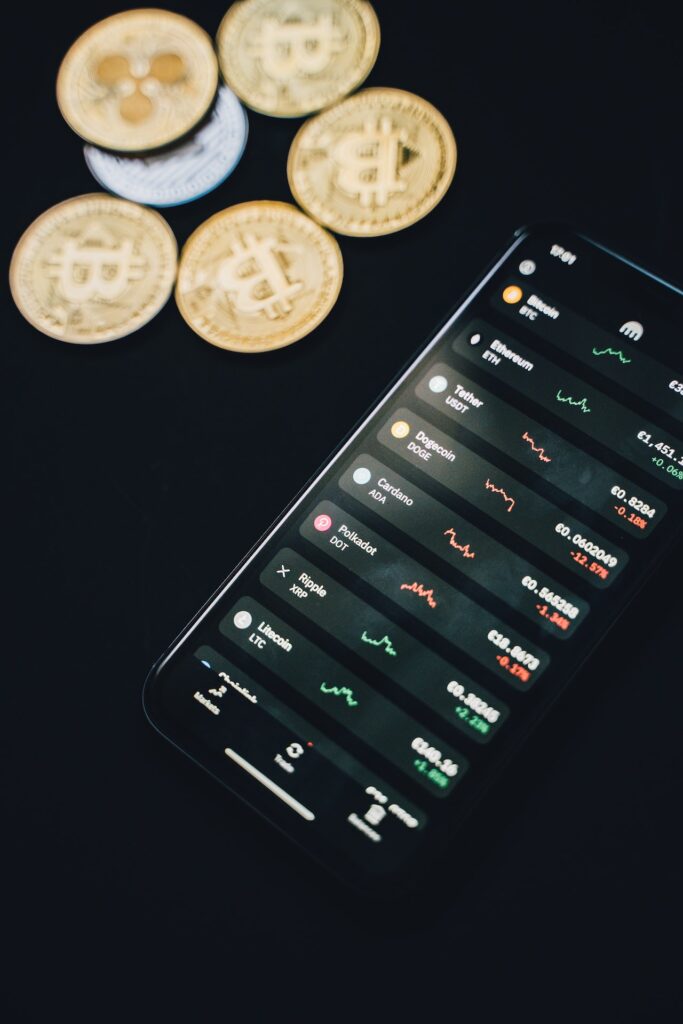
Currency Pair Notation
Currency pairs are denoted by a three-letter code. The first two letters represent the country or region, while the third letter represents the currency itself. For example:
- EUR/USD: Euro (EUR) against the US Dollar (USD).
- GBP/JPY: British Pound (GBP) against the Japanese Yen (JPY).
The first currency in the pair (EUR in EUR/USD) is the base currency, and the second currency (USD in EUR/USD) is the quote currency.
Major, Minor, and Exotic Pairs
Currency pairs are categorized into three main groups:
- Major Pairs: Major pairs consist of the most traded currencies globally. They include pairs like EUR/USD, GBP/USD, and USD/JPY. Major pairs typically have high liquidity and narrow spreads.
- Minor Pairs: Minor pairs, also known as cross-currency pairs, don’t include the US Dollar. Examples include EUR/GBP, AUD/JPY, and GBP/JPY. These pairs can still offer substantial trading opportunities.
- Exotic Pairs: Exotic pairs involve one major currency and one from a smaller or emerging economy. Examples include USD/TRY (US Dollar/Turkish Lira) and EUR/SGD (Euro/Singapore Dollar). Exotic pairs typically have lower liquidity and wider spreads.
Understanding Exchange Rates
The exchange rate of a currency pair tells you how much of the quote currency you need to buy one unit of the base currency. For instance, if the EUR/USD exchange rate is 1.20, it means one Euro can be exchanged for 1.20 US Dollars.
Importance of Currency Pairs in Trading
- Diversification: Traders can diversify their portfolios by trading different currency pairs, reducing risk exposure.
- Risk Management: Currency pairs with higher liquidity often have tighter spreads, making them attractive for risk management.
- Volatility: Different pairs exhibit varying levels of volatility, allowing traders to choose according to their risk tolerance and trading strategy.
Pricing and Fees
5. Spread and Commission Structure
Understanding the spread and commission structure is crucial when evaluating the cost of trading in the Forex market. In this section, we’ll explore what spreads and commissions are, how they impact your trading, and how to choose the most cost-effective option.
What is Spread?
Spread is the difference between the buying (ask) and selling (bid) prices of a currency pair. It represents the cost of trading and is typically measured in pips, which is the smallest price movement in Forex.
Fixed vs. Variable Spreads
- Fixed Spreads: Some brokers offer fixed spreads, which remain constant regardless of market conditions. This provides traders with cost predictability, especially during high volatility.
- Variable Spreads: Variable spreads can fluctuate depending on market conditions. They tend to be narrower during stable market conditions but can widen significantly during news releases or market events.
What Are Commissions?
In addition to spreads, some brokers charge a commission per trade. Commissions are typically based on the trading volume (lot size) and are separate from the spread.
Evaluating Trading Costs
When considering trading costs, it’s essential to factor in both spreads and commissions. Here’s how they impact your overall trading expenses:
- Spreads: A wider spread means a higher initial cost to enter a trade. Conversely, a narrower spread reduces the initial cost but may result in higher commissions.
- Commissions: Commissions add a fixed cost per trade. They may be preferable for traders who value transparency and want to avoid wider spreads during volatile periods.
Finding the Right Balance
The choice between fixed or variable spreads and commission-based pricing depends on your trading strategy and preferences. Here are some considerations:
- Scalpers: Scalpers who make frequent, small trades may prefer variable spreads during times of low volatility.
- Long-Term Traders: Long-term traders may favor fixed spreads for cost predictability.
- Transparency: Traders who prioritize transparency may opt for commission-based pricing.
Comparing Broker Costs
When choosing a Forex broker, it’s essential to compare their spread and commission structures. Look for:
- Competitive Pricing: Ensure the broker offers competitive spreads and reasonable commission rates.
- Execution Quality: Consider the broker’s trade execution quality, as this can affect slippage and overall trading costs.
Trading Tools and Education
6. Educational Resources
When it comes to Forex trading, continuous learning and staying informed are keys to success. In this section, we’ll explore the importance of educational resources, the types of resources available, and how they can help you become a more knowledgeable and confident trader.
The Importance of Education
Successful Forex trading is not just about intuition; it’s about making informed decisions based on a deep understanding of the market. Education plays a vital role in:
- Risk Management: Learning how to manage risk and protect your capital.
- Strategy Development: Developing trading strategies that align with your goals.
- Market Analysis: Understanding fundamental and technical analysis.
- Psychological Preparedness: Preparing yourself mentally for the challenges of trading.
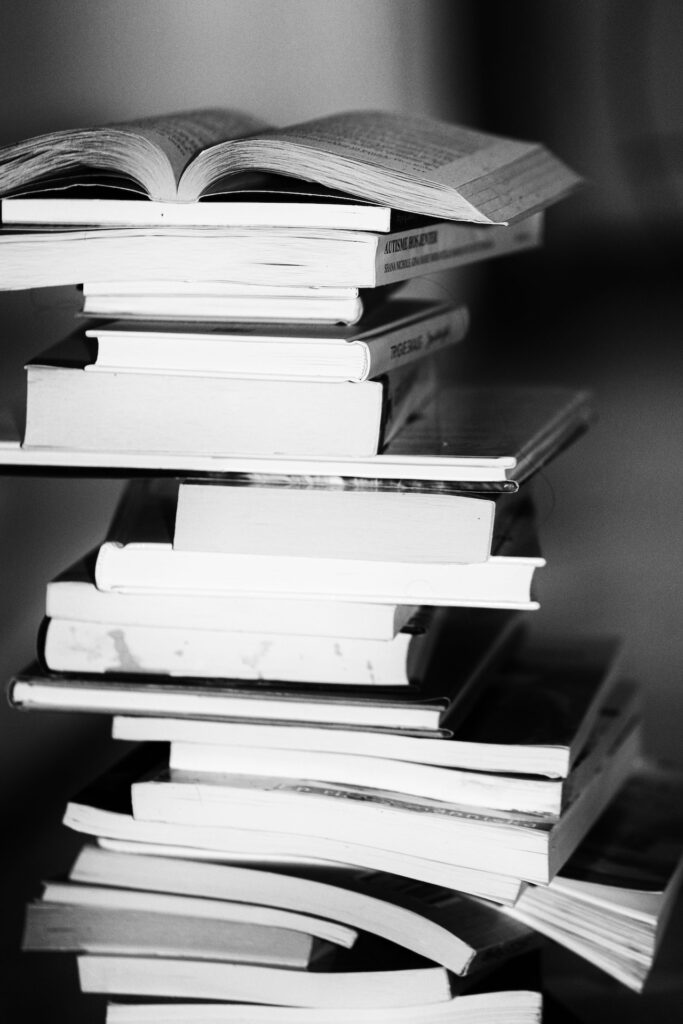
Types of Educational Resources
- Online Courses: Many brokers and independent providers offer comprehensive online courses covering various aspects of Forex trading. These courses often include video tutorials, quizzes, and certificates upon completion.
- Webinars: Live or recorded webinars provide insights from experienced traders and analysts. They cover current market trends, trading strategies, and more.
- eBooks and Guides: Educational eBooks and guides delve into specific topics, such as technical analysis, risk management, and trading psychology.
- Forums and Communities: Joining online trading forums and communities allows you to interact with fellow traders, share experiences, and gain insights.
- Demo Accounts: Most brokers offer demo accounts that allow you to practice trading with virtual money. This is an invaluable tool for hands-on learning without risking real capital.
Creating a Learning Plan
To make the most of educational resources:
- Set Goals: Define your trading goals and what you want to learn.
- Prioritize Topics: Focus on areas where you need improvement.
- Practice: Apply what you learn through demo trading.
- Stay Updated: Continuously update your knowledge as the market evolves.
7. Demo Accounts
A demo account is an invaluable tool for both new and experienced Forex traders. In this section, we’ll explore what a demo account is, why it’s essential, how to use it effectively, and its role in your trading journey.
What Is a Demo Account?
A demo account, also known as a practice or paper trading account, is a simulated trading environment offered by Forex brokers. It allows traders to practice trading without risking real money. Instead, you use virtual funds to execute trades and gain experience.
Why Are Demo Accounts Essential?
- Risk-Free Learning: Demo accounts provide a risk-free environment for beginners to learn the basics of Forex trading. It allows you to make mistakes and learn from them without financial consequences.
- Strategy Testing: Experienced traders use demo accounts to test and fine-tune trading strategies. It’s a safe space to experiment with different approaches and indicators.
- Familiarization: Before trading with real money, it’s crucial to become familiar with the trading platform, order types, and technical analysis tools. Demo accounts offer this opportunity.
How to Use a Demo Account Effectively
- Treat It Seriously: Approach your demo account as if it were a real one. This means following a trading plan, managing risk, and maintaining discipline.
- Set Realistic Goals: Define specific goals for your demo trading, such as practicing a particular strategy or improving your risk management skills.
- Keep a Trading Journal: Record your trades, strategies, and observations. This helps you track progress and identify areas for improvement.
- Experiment and Learn: Use the demo account to explore various trading strategies, timeframes, and currency pairs. Learn from both successful and unsuccessful trades.
Transitioning to Live Trading
While a demo account is an excellent learning tool, it’s essential to recognize when you’re ready to transition to live trading. Here are some signs:
- Consistency: You consistently achieve profitable results on your demo account over an extended period.
- Emotional Control: You can manage emotions like fear and greed effectively.
- Risk Management: You have a well-defined risk management strategy in place.
- Trading Plan: You’ve developed a comprehensive trading plan and can stick to it.
Customer Support and Reputation
8. Customer Support
Customer support is a critical aspect of your Forex trading journey. In this section, we’ll discuss the importance of responsive and reliable customer support, what to expect from your broker’s support team, and how to make the most of their assistance.
Why Customer Support Matters
- Problem Resolution: In the world of Forex trading, issues can arise. Whether it’s a technical glitch, a withdrawal problem, or a trading dispute, a responsive support team can swiftly resolve these issues.
- Guidance and Education: Customer support can provide guidance for new traders, helping them understand the platform, account features, and trading strategies.
- Accessibility: Forex markets operate 24/5, and issues can occur at any time. Accessible customer support ensures that you can get help whenever you need it.
What to Expect from Customer Support
- Availability: A reliable Forex broker should offer customer support via multiple channels, including email, live chat, and phone. Look for support that operates 24/5 or even 24/7.
- Responsiveness: Quick response times are essential. You should expect timely replies to your inquiries and issues.
- Expertise: Customer support agents should be knowledgeable about Forex trading, the broker’s platform, and trading-related queries.
- Politeness and Professionalism: Professional and courteous communication is a must. A good support team treats traders with respect and patience.
Making the Most of Customer Support
- Ask Questions: Don’t hesitate to ask questions about your trading account, platform features, or market conditions. It’s an opportunity to learn and clarify doubts.
- Test Responsiveness: Before opening a live account, test the broker’s customer support by sending inquiries. Evaluate their response times and helpfulness.
- Document Communications: Keep records of your interactions with customer support. This can be helpful if you encounter any issues that require resolution.
- Feedback: Provide feedback to the broker’s support team. Positive feedback encourages good service, and constructive criticism helps them improve.
9. Platform Reputation
When choosing a Forex trading platform, one of the most critical factors to consider is its reputation within the trading community. In this section, we’ll discuss why platform reputation matters, how to assess it, and the impact it can have on your trading experience.
The Importance of Platform Reputation
- Trustworthiness: A platform with a good reputation is more likely to be trustworthy and transparent in its dealings with traders.

- Safety of Funds: A reputable platform takes measures to safeguard traders’ funds, including segregating client funds from company funds.
- Customer Satisfaction: A positive reputation often indicates that traders are satisfied with the platform’s services, including customer support and ease of use.
Assessing Platform Reputation
- Online Reviews: Look for reviews from independent sources and traders’ communities. Pay attention to both positive and negative feedback to get a balanced perspective.
- Regulation: Check if the platform is regulated by a recognized financial authority. Regulation adds credibility to the platform.
- Track Record: Research the platform’s history and track record. Platforms with a long-standing presence in the industry often have established reputations.
- Community Engagement: Platforms that engage with the trading community through webinars, educational content, and forums are likely more reputable.
The Impact on Your Trading Experience
- Security: A reputable platform prioritizes security, reducing the risk of fraud or unauthorized access to your account.
- Fair Pricing: Reputable platforms offer fair and transparent pricing, ensuring you’re not subject to hidden fees or unfavorable trading conditions.
- Customer Support: A good reputation often indicates responsive and helpful customer support, enhancing your overall trading experience.
Mobile Trading
10. Mobile Apps
In today’s fast-paced world, access to your Forex trading account on the go is essential. A mobile app for your trading platform provides the flexibility and convenience you need. In this section, we’ll explore why a mobile app is crucial, what to look for in a trading app, and how it can enhance your trading experience.
The Significance of a Mobile App
- Accessibility: A mobile app allows you to access your trading account from anywhere at any time, whether you’re at home, in a café, or on the move.
- Real-Time Trading: With a mobile app, you can execute trades in real-time, keeping up with market movements and news as they happen.
- Convenience: The convenience of a mobile app means you won’t miss out on trading opportunities or important market events.
What to Look for in a Trading App
- User-Friendly Interface: The app should have an intuitive and user-friendly interface, making it easy to navigate and execute trades.
- Security: Ensure the app uses robust security measures to protect your account and personal information.
- Real-Time Data: Look for an app that provides real-time market data, charts, and news updates.
- Order Execution: The app should support various order types, including market orders, limit orders, and stop-loss orders.
- Compatibility: Check if the app is available for both iOS and Android devices to cater to a broader audience.
Enhancing Your Trading Experience
- Stay Informed: Use the mobile app to stay informed about market events, economic news, and price movements, even when you’re away from your computer.
- Quick Reactions: With instant access to your account, you can react quickly to changing market conditions, entering or exiting positions as needed.
- Demo Trading: Many trading apps offer demo accounts, allowing you to practice trading on the go without risking real money.
Regulation and Security
11. Regulatory Compliance
When it comes to Forex trading, regulatory compliance is a fundamental aspect that ensures the safety and fairness of the trading environment. In this section, we’ll discuss the significance of regulatory compliance, what it entails, and why it’s crucial for your trading activities.
The Importance of Regulatory Compliance
- Investor Protection: Regulatory bodies exist to protect traders and investors from fraudulent or unscrupulous practices by Forex brokers.
- Market Integrity: Compliance with regulations helps maintain the integrity of the Forex market, ensuring fair and transparent trading conditions.
- Risk Mitigation: Regulatory compliance includes risk management measures, reducing the chances of financial crises or broker insolvencies.
What Regulatory Compliance Entails
- Licensing and Regulation: Forex brokers must obtain licenses from recognized regulatory authorities, such as the Securities and Exchange Commission (SEC) in the United States or the Financial Conduct Authority (FCA) in the UK.
- Segregation of Funds: Compliant brokers separate clients’ funds from their operational funds, safeguarding traders’ investments.
- Financial Transparency: Regulatory compliance often requires brokers to publish financial reports and disclose their trading conditions, ensuring transparency.
How It Benefits Your Trading
- Security: Trading with a regulated broker provides a layer of security, as you know that your funds are protected and that the broker adheres to strict standards.
- Fair Trading: Regulated brokers are more likely to offer fair pricing, timely order execution, and transparent policies.
- Recourse: In case of disputes or issues with a regulated broker, you have recourse through the regulatory authority.
Verifying Regulatory Compliance
- Check Licensing: Before choosing a broker, verify their licensing and regulation with the relevant authority. Ensure that the regulatory body is reputable and respected.
- Read Terms and Conditions: Carefully read the broker’s terms and conditions to understand their compliance with regulations, especially regarding fund segregation and withdrawal policies.
12. Security Measures
Security is paramount in Forex trading, and understanding the security measures implemented by your broker is essential to protect your funds and personal information. In this section, we’ll explore the significance of security measures, the common safeguards used by reputable brokers, and how they ensure a secure trading environment.
The Importance of Security Measures
- Protection of Funds: Security measures are in place to protect your trading capital from unauthorized access or fraudulent activities.
- Data Privacy: Your personal and financial data must remain confidential and secure to prevent identity theft and fraud.
- Trust: A broker’s commitment to security builds trust with traders, assuring them that their investments are safe.
Common Security Safeguards
- Encryption: Reputable brokers use advanced encryption technology to secure data transmission between traders’ devices and their servers. This prevents unauthorized access to sensitive information.
- Two-Factor Authentication (2FA): Many brokers offer 2FA as an extra layer of security. It requires traders to provide a second verification method (e.g., a code sent to their mobile device) when logging in.
- Fund Segregation: Brokers are required to segregate clients’ funds from their operational funds. This ensures that even in the event of the broker’s insolvency, traders’ funds are protected.
How Security Measures Benefit You
- Peace of Mind: Knowing that your funds and data are secure provides peace of mind during your trading activities.
- Reduced Risk: Effective security measures minimize the risk of unauthorized access, fraud, and cyberattacks.
- Confidence: Secure trading conditions allow you to focus on your trading strategy with confidence.
Verifying Security Measures
- Read Broker Documentation: Carefully review the broker’s terms and conditions and privacy policy to understand the security measures they have in place.
- Contact Support: If you have questions about security measures, don’t hesitate to contact the broker’s customer support for clarification.
Trading Options (e.g., Automated Trading)
13. Automated Trading
Automated trading, often referred to as algorithmic or algo trading, is a method that allows traders to execute trades automatically based on predefined criteria. In this section, we’ll explore the concept of automated trading, its advantages, how it works, and why traders use it.
Understanding Automated Trading
- Predefined Rules: Automated trading relies on a set of predefined rules and algorithms to make trading decisions. These rules can be based on technical indicators, price levels, or fundamental data.
- No Emotions: Unlike human traders, automated systems don’t have emotions. They execute trades without being influenced by fear, greed, or hesitation.
Advantages of Automated Trading
- Precision: Automated systems execute trades with high precision and consistency, eliminating human errors.
- Speed: Automated trading can respond to market movements in milliseconds, taking advantage of rapid price changes.
- Diversification: Automated systems can manage multiple strategies or trade different assets simultaneously, allowing for diversification.
How Automated Trading Works
- Algorithm Development: Traders or developers create algorithms based on specific trading strategies.
- Data Analysis: The algorithm analyzes market data in real-time, looking for trade opportunities.
- Order Execution: When predefined conditions are met, the algorithm automatically executes orders.
Why Traders Use Automated Trading
- Efficiency: Automated systems can monitor markets around the clock, ensuring that no trading opportunities are missed.
- Risk Management: Automated trading allows for precise risk management, including setting stop-loss and take-profit levels.
- Backtesting: Traders can backtest their algorithms using historical data to assess their performance before deploying them in live markets.
Verifying Algorithm Performance
- Backtesting Results: Before deploying an algorithm, review its backtesting results to evaluate its historical performance.

- Real-Time Monitoring: Continuously monitor your automated trading system’s performance in real-time.
Conclusion
In the fast-paced world of Forex trading, knowledge is your greatest asset. This comprehensive guide has provided essential insights into the art and science of trading currencies. From understanding currency pairs and leverage to mastering risk management and trading strategies, you’ve gained a solid foundation.
Effective risk management is the bedrock of successful trading. By setting stop-loss and take-profit orders, managing leverage wisely, and diversifying your portfolio, you mitigate potential losses and protect your hard-earned capital.
Trading strategies are your tools for navigating the Forex market’s twists and turns. Whether you’re drawn to day trading’s quick moves, swing trading’s medium-term approach, or trend following’s long-haul potential, there’s a strategy suited to your risk tolerance and time commitment.
Your choice of a reputable and regulated Forex broker is pivotal. Seek one that aligns with your trading goals, offering a user-friendly platform, responsive customer support, and competitive spreads.
Technical and fundamental analyses are your compasses in the trading journey. Embrace chart patterns, indicators, and economic events to make informed decisions.
Managing emotions is a vital aspect of trading psychology. Discipline, patience, and emotional control are your allies in avoiding impulsive actions driven by fear or greed.
Education and practice should be ongoing pursuits. Use demo accounts to hone your skills risk-free and continue learning to stay ahead in the dynamic Forex landscape.
Automated trading offers precision and speed. While it can enhance efficiency, prudent monitoring is essential to ensure your algorithms align with market conditions.
Prioritize security when choosing a broker, emphasizing encryption and two-factor authentication. Regulatory compliance provides an extra layer of assurance for your funds.
As you embark on your Forex trading journey, remember that both knowledge and experience are your cornerstones of success. Cultivate your skills, adapt to market changes, and stay disciplined.
Trading offers the potential for financial freedom, but it’s not without risks. Trade responsibly, never invest beyond your comfort zone, and seek professional advice when needed.
With dedication, a well-crafted strategy, and a commitment to continuous learning, you’re equipped to navigate the intricate world of Forex trading and work towards your financial goals. We have also good plans for you with us FinansieraTrading.com Best of luck on your trading adventure!


